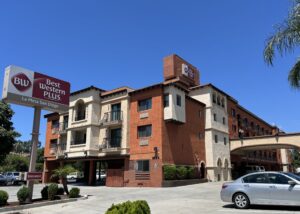Hotel Sales Might Be Down, but This Carlsbad Sale Just Broke a Record for Southern California
Hotel Sales Might Be Down, but This Carlsbad Sale Just Broke a Record for Southern California
The San Diego Union-Tribune
02/05/19
Hotel Sales Might Be Down, but This Carlsbad Sale Just Broke a Record for Southern California
By Lori Weisberg
California hotel sales declined sharply last year, but San Diego still earned bragging rights as having the most expensive sale in Southern California.
The $170 million sale last November of the Park Hyatt Aviara catapulted the county into first place for the highest individual hotel transaction, but the $575 million sale of the 681-room Park Central in San Francisco was No.1 in California, according to a year-end report prepared by the Atlas Hospitality Group.
The sale of the upscale Carlsbad resort, which also included a golf course, had been taken over by its lender following a years-long struggle by previous owners to repay debt that was coming due.
Statewide, the total number of individual transactions last year — 280 — represented a more than 24 percent drop compared to 2017. It was also the third lowest volume of sales over the last decade, Atlas reported.
Similarly, the total dollar volume — $5.6 billion — also fell, posting a decline of nearly 10 percent. Still, in a sign that hotel values may be rising for at least some properties, the median price per room paid by buyers — $121,439 — hit a new record high. Cavallo Point, a lodge in Sausalito that sits at the foot of the Golden Gate Bridge on San Francisco Bay, and the 10-room Mansion on Sutter in San Francisco both sold for more than $1 million per room in 2018.
The $5.6 billion in sales for California fell far short of the 2015 peak of $9.5 billion.
San Diego County saw similar drops in both the quantity and dollar volume of sales, with the latter falling more than 31 percent to $420.7 million.
Atlas CEO Alan Reay offered a number of explanations for the fall off, including rising interest rates, increased labor costs that in turn will dampen net operating income, a pullback in investment from China, and stricter underwriting standards from lenders.
Probably the biggest factor, though, is the widening gap between the prices that buyers are demanding and what sellers are willing to pay.
All these forces will likely be at work this year as well, which will contribute to a continued slowdown in sales and a flattening of prices, according to Reay.
“The last time we saw this kind of a drop was from 2008 to 2009, when there was a 50 percent decline in sales transactions,” Reay said. “It was because people in 2009 were trying to get the kind of prices achieved in 2008, and buyers weren’t going to pay that. So in 2018, we had a lot of sellers who wanted prices that they saw in 2017 even though interest rates and labor costs were going up and revenues per available room were starting to flatten.
“Whereas buyers in 2017 and 2016 were anticipating growth in revenues and profits, very few buyers are projecting that today.”
San Diego hotel owner and operator Robert Rauch would agree. More specifically, he said it’s the high prices that sellers are demanding that have dissuaded him from making any purchases.
“Sellers are holding onto their assets because they think the market still has a little bit of life in the economy and are not willing to discount their property,” said Rauch, who has not purchased any hotels in the last couple of years. “Buyers will say we want a discount because we’re going into a recession, and sellers will say, no, we did great last year, so there is this disconnect.”
At the same time that hotel sales were declining last year, the pace of new hotel development was on the rise, with some 112 hotels accounting for 16,700 rooms in various stages of construction by the end of 2018. That was a 28 percent increase over 2017.
For now, hotel investors are better off building than buying, which helps explain the uptick in development last year, Reay said.
Even though the median price per room paid last year hit a new record, there was a reason for that, Reay said. For the most part, those buyers who were paying high prices were doing so to defer taxes on commercial properties that were sold.
Under what is known as a 1031 exchange, buyers can defer capital gains taxes on the sale of a property if they purchase another commercial property within a certain time frame. It was those sort of reinvestments, Reay said, that drove the median price per room upward.


